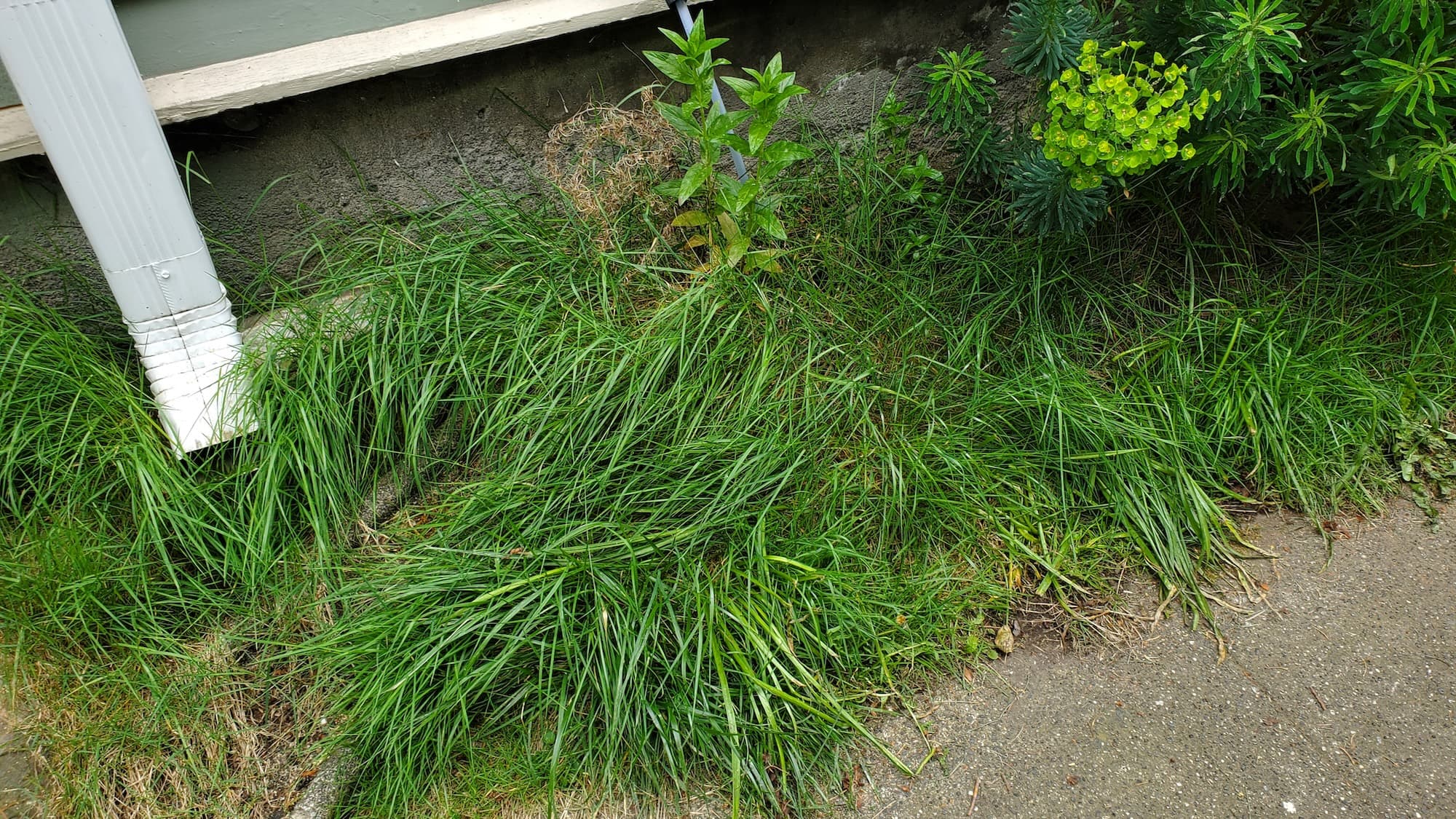Weeding Blackberry Cane Cutting
Homeowner’s Issue
Weeding gets the typical Pacific Northwest weather: steady fall and winter rain with mild, sometimes dry summers. That means blackberry brambles take off where soil is loose or disturbed — especially on slopes and along property edges. Many yards in Weeding and nearby White Center have compacted clay in low spots and looser loam on terraces, which creates pockets where blackberries outcompete desirable plants. Shade from maples and western exposure often invites moss and ivy undergrowth, while sunny banks favor thorny primocanes.
Drainage is a frequent trouble: saturated winter soils push canes into new areas, and steep driveways or hillfront lots can make mechanical removal tricky. Homeowners also worry about curb appeal and HOA rules about visible invasive growth. The common challenges are recurring regrowth from roots, messy cut canes, and the safety issue of thorns near walkways or play areas. Practical, sustainable work — timed for minimal disturbance and matched to local drainage and sun exposure — keeps properties tidy and reduces repeat visits.
Our Quality Service
We focus on mechanical, eco-friendly methods only — no herbicides. We cut canes to ground level, remove root crowns where practical, and haul cuttings for composting or proper disposal. On slopes and wet areas we use erosion-aware techniques to protect drainage and nearby plantings. For Weeding properties near White Center or Lincoln Park corridors, we recommend native replanting to outcompete blackberries and improve long-term resilience. Benefits include safer yards, better curb appeal, reduced maintenance, and solutions that last through our rainy seasons.
What’s Included
- Onsite assessment of blackberry extent and root systems
- Cane cutting to ground level and selective crown removal
- Debris removal and haul-away (or green bin composting)
- Basic bed clean-up and light edging
- Written care and replanting recommendations
Options / upgrades:
- Mulch + fabric installation for suppression
- Organic, contact-based weed control (mechanical/heat where appropriate)
- Soil amendment and planting of Washington-native replacements
- Haul-away vs. green bin composting choice
Before & After / Expectations
Expect some noise from saws and pruners and a day or two of surface debris before final haul. We’ll need clear access to the work area and space for green waste staging. Post-service, new shoots can appear from roots; regular quarterly checks reduce regrowth. For Weeding yards: keep mulch 2–3 inches deep, monitor drainage channels after heavy rains, remove new primocanes promptly, and trim ivy/moss in shady corners to limit re-establishment.
FAQs
- How long will this take?
- Small patches often take a few hours; larger thickets or slope jobs may need a full day or more.
- Do you use chemicals?
- No. We use mechanical, organic, and cultural methods only.
- Will roots be removed?
- We remove root crowns when safe and practical; full root excavation is an upgrade for persistent beds.
- Do you follow HOA rules?
- Yes — we’ll note visible changes and can document work for HOA compliance.
Call to Action
Weeding homeowners: book a free estimate for blackberry cane cutting and sustainable cleanup. We schedule quickly, work reliably, and know the local drainage and sun patterns that affect regrowth. Email neatandtidyseattle@gmail.com or call/text 206-538-9344 to set up a visit. fast scheduling • local expertise • clean, eco-friendly results










